How to Text a GIF: Find, Create, and Send GIFs From Your Business [Plus Examples]
Wondering how to add a GIF to a text? Check out the most popular methods and use cases from real businesses.

Wondering how to add a GIF to a text? Check out the most popular methods and use cases from real businesses.

If you’ve found yourself scanning Google for instructions on how to text a GIF, you’re in good company.
As a business texting company ourselves, this is a common question we get from business owners looking to spice up their texts and give them some extra personality. The good news is, you can easily put a GIF in a text in just a few steps.
For starters, here’s how to text a GIF with your iPhone and Android smartphone:
Now, you might be a little confused as to why we’re talking about how to add a GIF to a text from your own device, given that we offer a text marketing software ourselves.

The fact is, you can add GIFs to text in a number of ways, including using software like ours (and for business owners, it’s honestly the best option).
We’ll go into detail about how to send a GIF in a text, and when and why they’re useful.
With SimpleTexting, adding a GIF to your text message is easy. It only takes four steps.
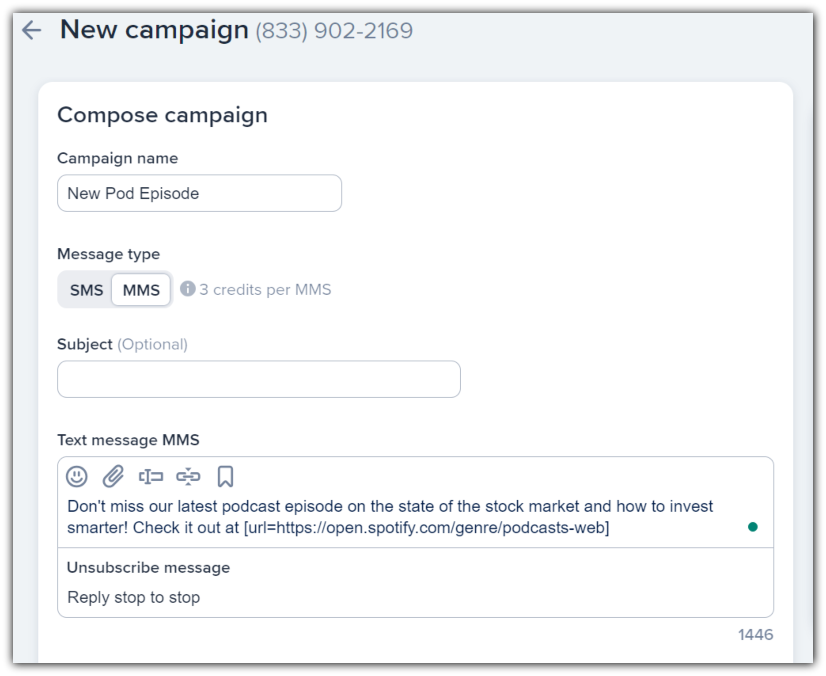

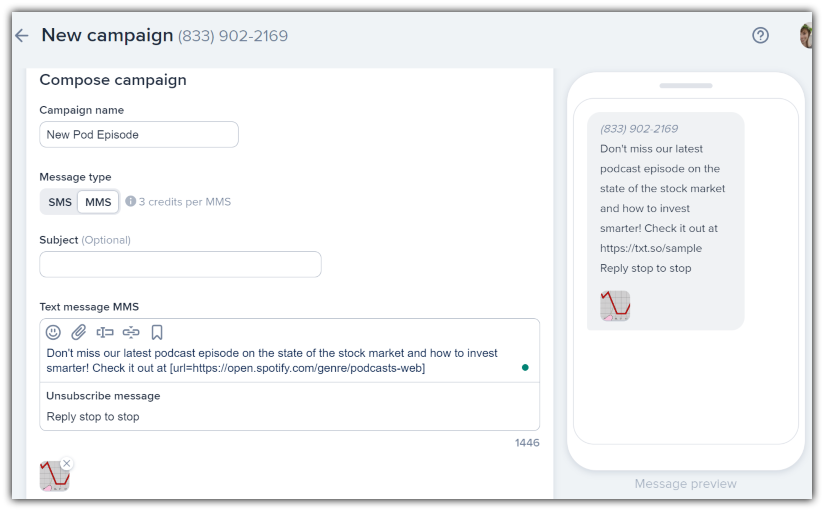
Here is an example of what your recipient will see when you send a GIF via text message:
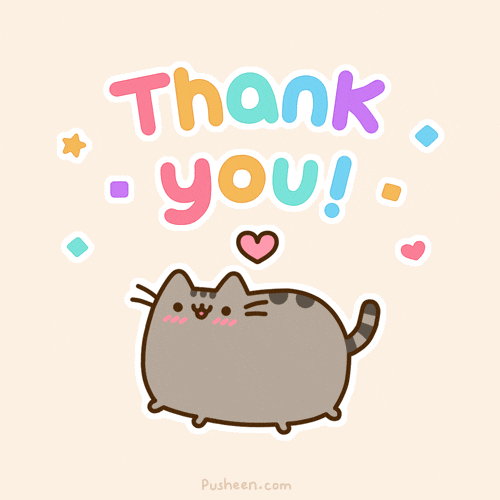
When deciding whether or not to put a GIF in a text, ask yourself the following questions.
If you’re adding extra flair to a text, a GIF can be a great tool for emphasizing your message. However, you don’t want to use a GIF as your primary (or only) form of communication.
Way back in 2015, YouTube made this mistake when they responded to a reporter with a GIF instead of a more professional “no comment” response .That rubbed a lot of people the wrong way.
GIFs are excellent decoration, but expecting them to communicate your entire message is a bad idea.
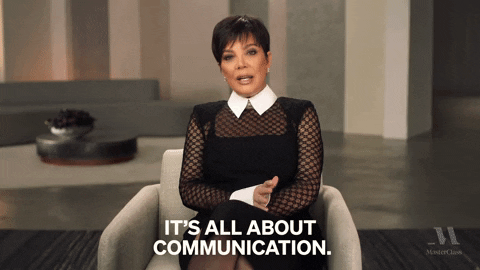
If you’re looking for a way to bring emotion or emphasis to your brand’s style or vision, GIF it up.
Try out GIFs from different sources and use different tones to see what your audience responds to best.
Storytelling is the perfect type of text to send a GIF with. It’s an extra visual that makes material more memorable for readers and an easy way to practice “show don’t tell” content creation.
Other compelling ways to use a GIF include:
Okay, so, we know there are plenty of applications for sending GIFs in texts. But why do it in the first place?

Because GIFs are so common lately, you can find them online in a lot of different places, but the top 3 sites for convenience and selection have to be:
On these sites, you can find a large selection of GIFs from the serious to the silly and even occasion-specific GIFs. From there, you can download the ones you want to add to your texts.
Creating GIFs is pretty simple, and GIPHY even has an entire guide on how the process works.
The basics are:
Having a tough time visualizing GIFs in real-life business texts? No worries. Here are three examples directly from my own text inbox.
Although GIFs are a frequent sight in this retailer’s texts, one recent example caught my eye in particular.
DragQueenMerch often launches and advertises collections based on a particular performer, and they sent me a text a little while back naming the collection and showing a GIF of the queen who inspired it.

This mattered not only because it was a gorgeous visual, but also because I wasn’t familiar with that performer beforehand. If they’d simply said the name, I wouldn’t have thought twice about it. Seeing that the queen in question made great art piqued my interest.
I associate the brand name Vegamour with two things: fabulous hair care and an immediately identifiable aesthetic.

As you can see from this example, they included their signature pink-and-green colors and iconic bottles in the accompanying GIF and added some helpful information about the upcoming sale.
Although it’s not a retailer or other sales-focused business, nonprofit Be The Match still runs a thriving text program with informational resources for donors, fundraising opportunities, and more.
They also send out a text to wish me a happy birthday every year, complete with a sweet GIF to make the whole message prettier.
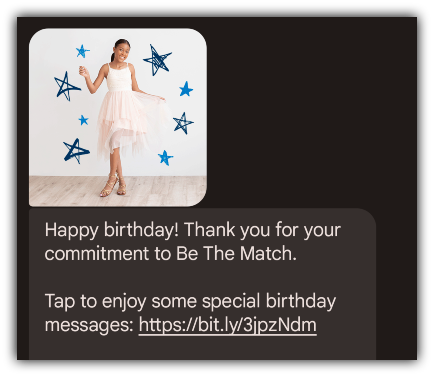
The important thing to note here is that Be The Match isn’t trying to sell me anything or get me to take action. They just reached out to let me know they appreciate me, and that matters.
You’re almost ready to start sending GIFs in your text messages. Before you do, though, here are a few best practices to keep in mind.
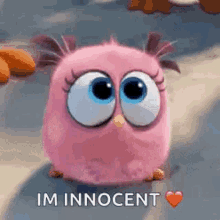
GIF is short for “graphics interface format,” a type of low-resolution format. Although we think of them as moving images, GIFs can also be still images. It’s the low quality and formatting of the image (not the motion) that defines it.
That said, for this discussion, we’re focusing on the well-loved moving images found on almost every messaging and communication platform.
So, what’s behind the immense popularity of GIFs, and why should you be taking advantage of their casual, fun energy in your marketing messages?
As we mentioned, GIFs typically involve some slight motion accompanied by text.
As anyone who has poured weeks into developing a short video knows, it takes time to create that form of content. While photos are much easier to come by, they don’t usually reach the level of engagement video achieves.
So why are GIFs so popular? Because they’re the easy, beautiful combination of the two mediums.
The movement adds a dimensional element that static images just don’t have. And creating them is easy and quick, oftentimes requiring no technical ability at all.

Sometimes they’re silly, but on a psychological level GIFs pack a surprisingly powerful amount of influence. In a small amount of space, GIFs do a few important tasks:
Sending a GIF also demonstrates something concrete about the identity of the sender. Are you hip, funny, clever, quirky? Expressing yourself with a well-chosen GIF makes you relatable and exciting to your audience.
Another reason GIFs are a great communication tool is because they are inherently shareable. You want to create bite-sized elements for customers that will encourage them to share. Adding on a GIF is a fun and easy way to create material that is far more engaging and thus likely to be shared.
If you have an iPhone, Apple has made it incredibly easy to send out GIFs with your messages.
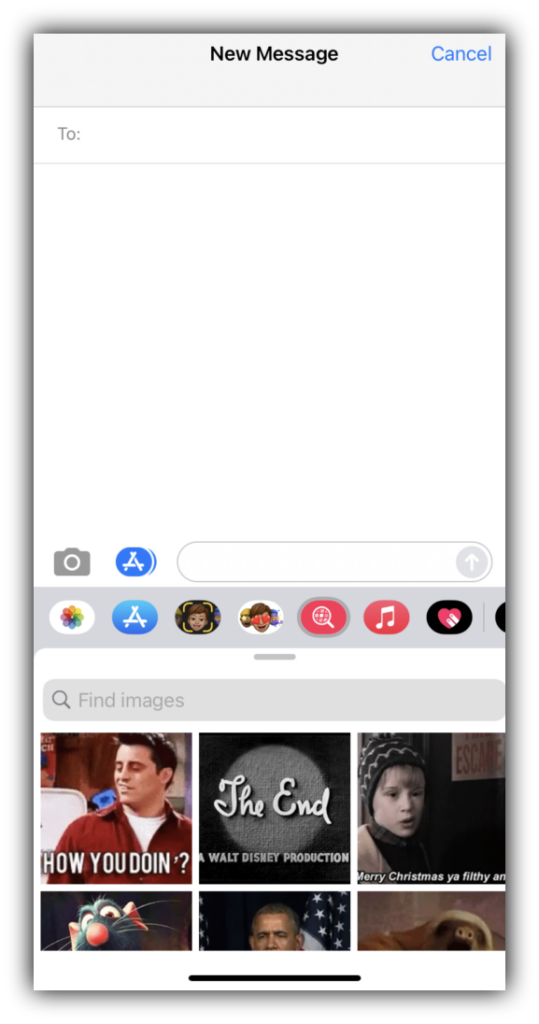
Much like on iMessage, GIFs have become a must-have feature for native android messaging apps. Finding and sending a GIF couldn’t be more simple.
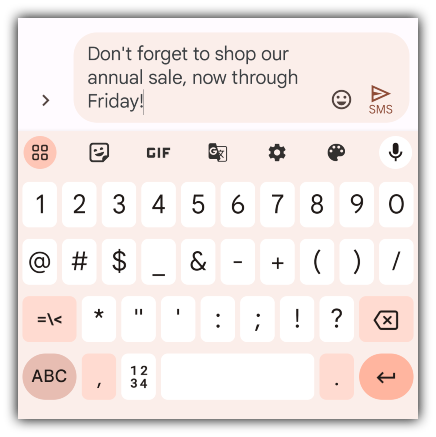
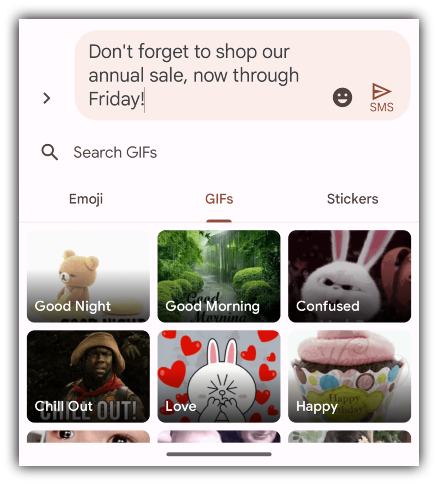
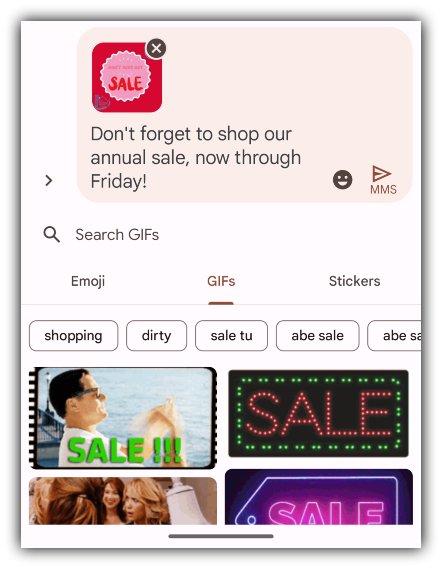
The number one thing that matters when sending a GIF is who you’re sending it to. Whichever platform you send it on, your audience is your priority.
Just as you tailor messages to different audiences, your GIF needs to align with who is receiving it.
Start by asking yourself a few key questions:
It also helps to know who your audience is to begin with, along with what they need from your brand. With the above answers and a clear audience persona in mind, you’re all set to GIF like a pro.
This article was originally published April 24, 2019. It was significantly updated July 11, 2023. Meghan Tocci contributed to this article.
Lily is a content marketing specialist at SimpleTexting. She specializes in making helpful, entertaining video content and writing blogs that help businesses take advantage of all that texting has to offer. When she’s not writing or making TikToks, you can find Lily at roller derby practice or in a yoga studio in the Seattle area.
More Posts from Lily NortonSimpleTexting's new Segments feature lets you set up customer segmentation right inside your account. Make your text message marketing even smarter by targeting specific groups of subscribers and sending them campaigns tailored to their interests or demographics.
ReadExplore two different ways to send audio files via text message as well as some of the benefits sending audio clips can have.
ReadStart a text marketing campaign or have a 1-on-1 conversation today. It's risk free. Sign up for a free 14-day trial today to see SimpleTexting in action.
No credit card required